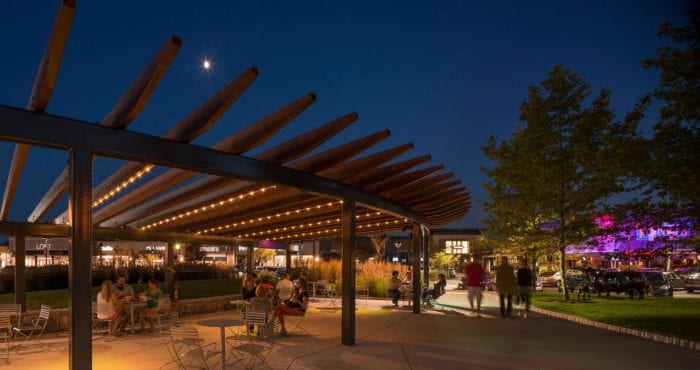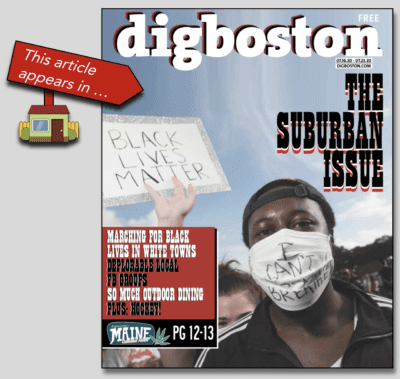
The local restaurant scene is hurting, but things are somewhat better as you get farther from Boston
When the COVID-19 pandemic started to take hold in the Boston area earlier this year, one fear was that the local restaurant industry would be decimated, with perhaps up to half the dining spots—or even more—possibly closing for good when the dust settled.
Now that the surge is over locally and restaurants are starting to open back up in a limited manner, we’re getting more of a feel of how the coronavirus has affected the dining scene, and one pattern that seems to be developing comes as no surprise, with restaurants in densely packed areas seeming to suffer more than those in communities that have more space with which to work. Some of the reasons for this are obvious, but it appears that there are other things at play here that aren’t so cut and dried.
While we are now in Phase 3 of the reopening of the state economy, it is Phase 2 that allowed restaurants to reopen, with outdoor dining at first and indoor dining later on, and it’s becoming increasingly clear that diners tend to feel much more at ease sitting outdoors rather than inside. Because so many customers are hesitant to grab a table within a dining room, restaurants that have outdoor patios appear to be doing better in general while those that have no room for patios or decks tend to be struggling (not taking into account eateries that are traditionally seen as takeout spots).
 And while some sections of Boston, Cambridge, Somerville, and Brookline have streets that are conducive to outdoor dining, other areas such as Boston’s Financial District simply have little or no room for it, with the best hope for many of these places being to set up a few small tables out front on the sidewalk. When you compare that to increasingly hot suburban communities such as Burlington, Braintree, and Woburn, while also looking at the spacious new mixed-use developments along Route 128 such as 3rd Ave Burlington, University Station, and MarketStreet Lynnfield, you start to realize that a place such as Tony’s C’s in Burlington has a huge advantage over a tiny upscale restaurant near Downtown Crossing. If outdoor dining is seen as the main savior for restaurants, the suburbs tend to be set up better for this.
And while some sections of Boston, Cambridge, Somerville, and Brookline have streets that are conducive to outdoor dining, other areas such as Boston’s Financial District simply have little or no room for it, with the best hope for many of these places being to set up a few small tables out front on the sidewalk. When you compare that to increasingly hot suburban communities such as Burlington, Braintree, and Woburn, while also looking at the spacious new mixed-use developments along Route 128 such as 3rd Ave Burlington, University Station, and MarketStreet Lynnfield, you start to realize that a place such as Tony’s C’s in Burlington has a huge advantage over a tiny upscale restaurant near Downtown Crossing. If outdoor dining is seen as the main savior for restaurants, the suburbs tend to be set up better for this.
Even before the coronavirus outbreak, there had already been concerns about rents in Boston and the immediate areas around the city, especially in such places as the Seaport District, Harvard Square in Cambridge, and both the South End and the Back Bay. The pandemic did nothing to change this, instead bringing the issue to the forefront because of the potentially devastating effects of paying tens of thousands of dollars each month in some cases for dining spots that were mostly—or fully—closed. And while cities and towns such as Waltham, Needham, Hingham, and Reading are not exactly cheap when it comes to leases (at least compared to other parts of the country), the difference in cost between a restaurant space near an office park in Waltham and a restaurant space in the heart of downtown Boston is generally pretty substantial. Combine this with the aforementioned issue of having space (or lack of) for outdoor dining and you can see where suburban restaurants might have a better chance for survival.
In normal times, public transportation is typically seen as the best way to get around Boston, as well as parts of Cambridge, Somerville, and Brookline, but these are not normal times, and to put it plainly, people are scared to be stuck in a crowded bus stuck in rush-hour traffic or underground in a packed subway, so getting around the city isn’t as easy as it used to be for many. In addition, many people who live in the suburbs and work in the city are now working from home in the suburbs, while those who live and work in the suburbs are simply not coming into the city for the most part. Because of this, restaurants in Boston’s Chinatown or Cambridge’s Kendall Square can’t expect to get as much business as a dining spot in a town such as Canton or Wakefield, where cars rule over public transportation anyways. Someone who lives in one of those communities will find it much easier to drive a short distance to a local restaurant with a large outdoor patio (and find an easy parking space) rather than head into the city when they really have no reason to do so since they’re already working from home anyways.
For some parts of Boston, a perfect storm seems to be developing in which areas that rely on both college students and sports fans have become near ghost towns, with perhaps the model for this being the Fenway area. Back when things were more normal, restaurants and bars along Brookline Avenue, Boylston Street, and Lansdowne Street would typically have lines out the door in March and April, with students from BC, BU, Northeastern, and elsewhere competing with Sox fans for tables, but now? There’s no baseball—and when there is, there won’t be any fans allowed into Fenway Park—and there’s no school for students either right now, and it remains to be seen how many students will return come late August and early September. The North Station/West End area of Boston faces similar issues, as Celtics and Bruins games will likely have no fans allowed for the foreseeable future, either, and even though the big universities aren’t as close as they are to the Fenway, the area does attract a lot of college students as well.
Restaurants in the city also face similar issues when it comes to major events and conferences, most of which have been canceled and will likely continue to be canceled for a while to come. Suburban areas have also been hit by this—especially in communities that cater to large corporations such as Burlington, Braintree, Woburn, and Waltham—but some of the region’s biggest events tend to take place in or near Boston’s waterfront area, which leads to huge hits for restaurants in Fort Point, the Seaport District, and South Boston that depend on hungry travelers who would ordinarily be in town for at least a few days.
What does this all mean for restaurants in the city? While they indeed face some big hurdles that suburban dining spots tend not to have, there still remains hope, especially with many being allowed to open temporary outdoor patios while getting more and more used to takeout/delivery for those who live nearby (and keep in mind that a lot more people live in places such as Downtown Crossing, the Seaport District, and East Cambridge than a couple of decades ago).
And if a therapeutic or a vaccine arrives over the coming months, that will obviously be a big deal for dining and drinking spots in the city, even if they aren’t immediately able to get back to where they were before the pandemic hit. But for now, restaurants in the suburbs are, on a relative basis at least, in much better shape than those in or near the city and will probably continue to be so for a while to come.
Marc is the founder of @hiddenboston, a textbook editor, a hike leader for @AppMtnClub, and a food and travel writer and commenter for DigBoston, NBC/NECN, WBZ, WMFO and indie617.


